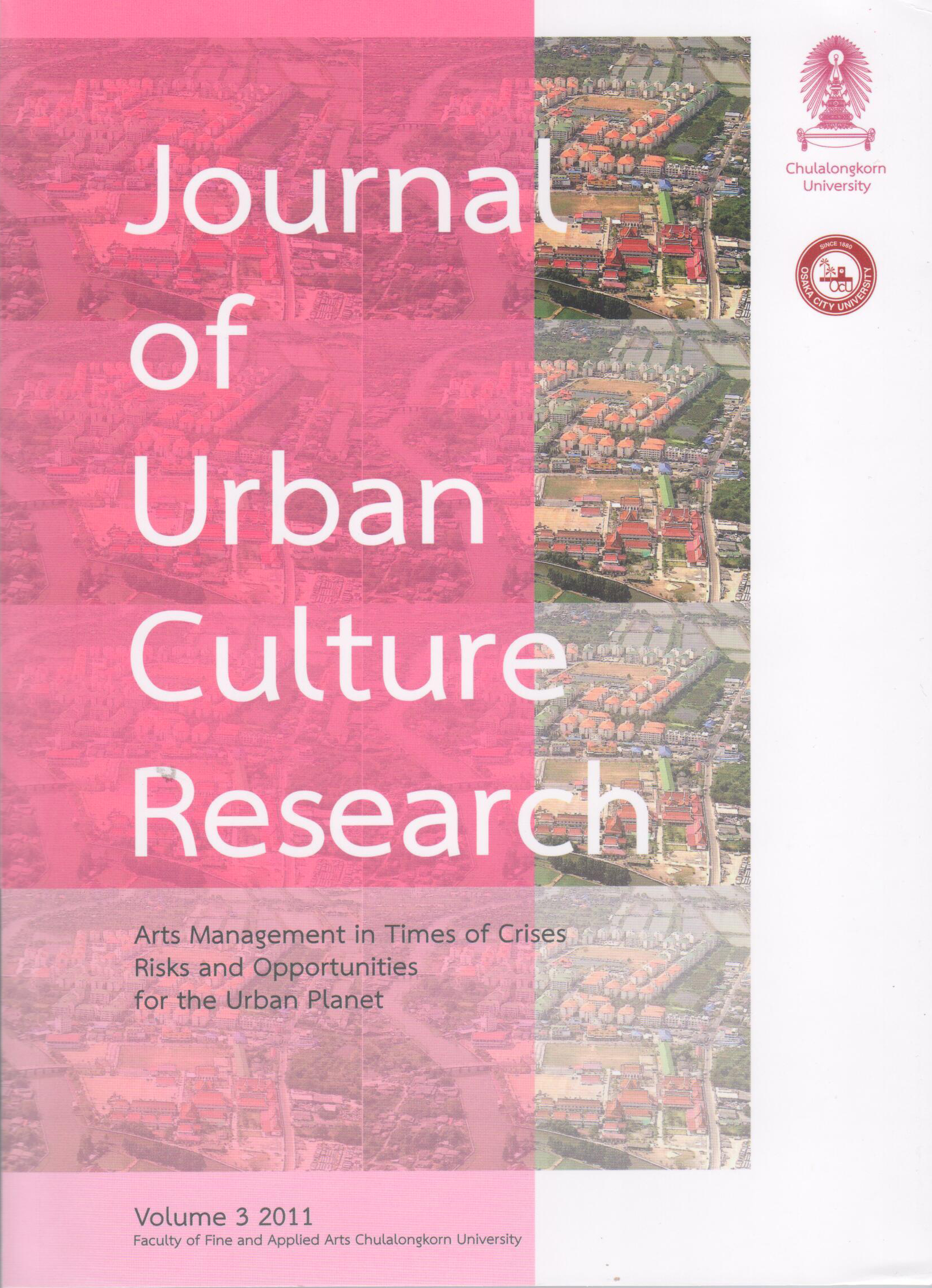City Culture at the Crossroads
DOI:
https://doi.org/10.14456/jucr.2011.7Keywords:
Theater, Tradition, Malaysia, Malay Culture, National Identity, Community IdentityAbstract
For most Malaysians the State of Kelantan is almost synonymous with Malay arts and craft. The state capital, Kota Bharu is often described as the Cradle of Malay Culture. Despite of this, the cultural capital of Malaysia strictly forbids the performance of traditional Malay-theater. The traditional Mak Yong Theater and the Malay shadow theater Wayang Kulit, both listed on UNESCO’s World Heritage List, are so unpopular for the region’s governmental authorities that they might only be performed for tourists or for research purposes. On the national level the attitude towards the traditional Malay art and culture is quite different. These days, The National Department for Culture and Arts Negeri Kelantan are building up a new Government Cultural center in Kota Bahru and are giving classes in the Mak Yongtraditions to preserve Mak Yong. The center will function as a place to introduce cultural programs and to organize training and talent development in performing arts. The paper will discuss the reasons for the contradictory attitude towards the Malay arts on the national and regional level. I will further discuss the innovations in the forms by creative Malay artists in order to oblige the regions authority and get authorization to perform their art. (The author’s PhD studies and subsequent research projects have focused on Malaysian theater.Downloads
How to Cite
Kvam, Hilde. 2014. “City Culture at the Crossroads”. Journal of Urban Culture Research 3 (-):60-69. https://doi.org/10.14456/jucr.2011.7.
Issue
Section
Articles
License
Authors authorize the JUCR to publish their materials both in print and online while retaining their full individual copyright. The copyright of JUCR volumes is retained by Chulalongkorn University.
The views and opinions expressed herein are those of the individual author(s) and do not necessarily reflect the policies or opinions of the Journal (JUCR), it editors and staff, Chulalongkorn University, or Osaka Metropolitan University.








